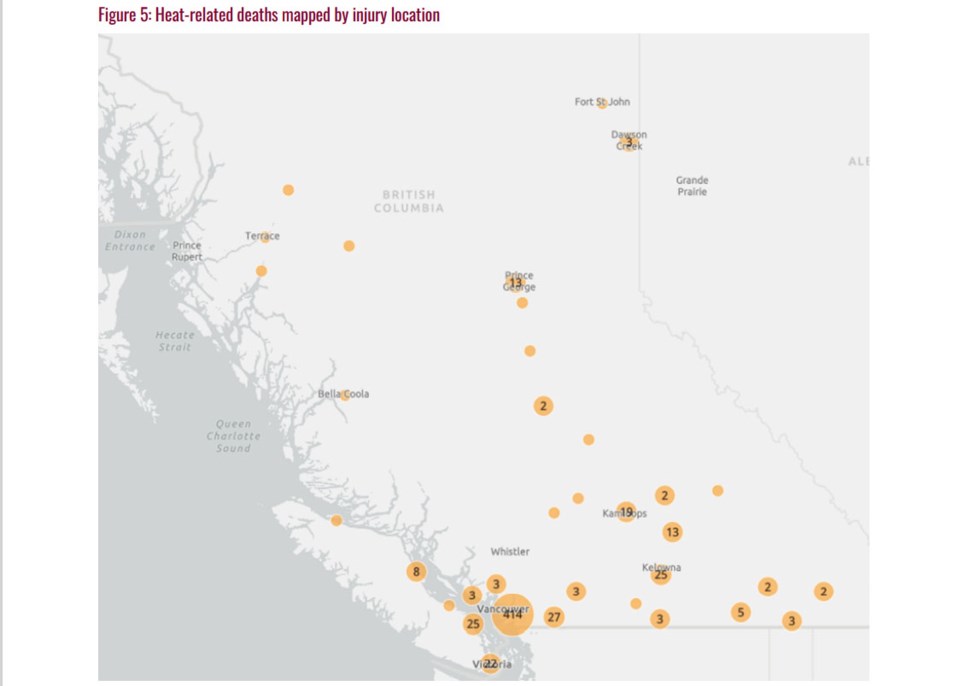A deadly heatwave in late June and early July last year claimed the lives of 14 people in the Prince George area, according to a report issued by the BC Coroners Service on Tuesday.
A map included in the report shows that 13 of those deaths were within the city itself, and one was in the rural area south of the city.
That number increased by two from a preliminary report issued by the Coroners Service released in November. Across the province, 619 people died of heat-related causes in the summer of 2021, including 23 in the Northern Health region.
Across the province, 93 per cent of those deaths occurred between June 25 and July 1. On June 27, 2021, the city reached a record 36.4 C and on June 28 temperatures rose to 37.9 C.
Of 12 cities listed individually in the report, Prince George had the fourth-highest death rate at 18.3 deaths per 100,000 residents. Only New Westminster (41.8 deaths per 100,000 people), Burnaby (29.3 deaths per 100,000 people) and Chilliwack (29 deaths per 100,000 people) had higher rates of death.
Statistics weren’t provided about the deaths in the Northern Health region, but across B.C. 90 per cent of those who died were 60 years old or older, while none were under 30. In addition, 91 per cent of those who died had one or more chronic illness.
Nearly all (98 per cent) of deaths occurred inside a residence – 73 per cent in private homes (39 per cent in multi-unit buildings and 34 per cent in detached buildings), 10 per cent in social housing, seven per cent in seniors or long-term care housing and seven per cent in mobile homes, trailers, RVs or campers. Only 0.5 per cent of those who died were identified as homeless.
The majority (56.1 per cent) of those who died lived alone and 83.4 per cent of those who died were either found dead or died on the scene before being transported to hospital.
Of those who died, 7.4 per cent were in homes with air conditioners present and 24.1 per cent were in homes with fans in use.
Only 10.2 per cent of deaths occurred on days with a maximum temperature below 30 C. A third of deaths occurred on days with daytime highs of 35-39 C, 28.6 per cent occurred on days with daytime highs of 30-34 C and 17.8 per cent of deaths occurred on days with daytime highs of 40 C or more.
“The human body maintains a core temperature of approximately 36.6°C, and significant changes in core temperature are hazardous to our health. The mechanisms and rates of heat gain and loss are impacted by many factors, including age, cardiovascular fitness, chronic conditions, medications, clothing and humidity,” the report said. “Health impacts can include dehydration, heat rashes, cramps, heat exhaustion and, most threatening, heat stroke. Heat stroke refers to when core body temperature reaches at least 40°C, resulting in severe impacts to the central nervous system. Heat stroke can result in confusion or loss of consciousness and is a medical emergency that needs to be treated quickly. If untreated it can lead to death.”




.jpg;w=120;h=80;mode=crop)
